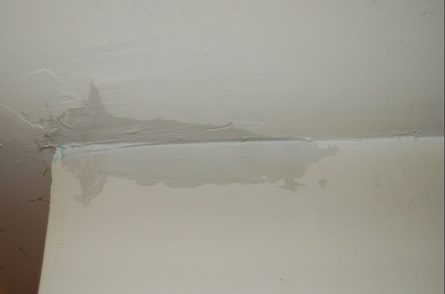Do's & Don'ts of Water Restoration.
Free QuoteEverybody has got their personal perception about Keeping Your Home Safe This Holiday Season.

Water provides life, yet water intrusion on some parts where it's not meant to be can result in damages and also trouble. In enhancement, residences with water damages scent moldy and old.
Water can come from many resources like hurricanes, floods, burst pipes, leaks, as well as sewer issues. If you have water damage, it's far better to have a functioning understanding of security precautions. Below are a few guidelines on exactly how to deal with water damages.
Do Prioritize Home Insurance Coverage Insurance Coverage
Seasonal water damage can originate from floods, seasonal rains, and also wind. There is likewise an event of a sudden flood, whether it came from a faulty pipe that instantly ruptures right into your home. To secure your residence, copyright insurance coverage that covers both acts of God such as natural catastrophes, and also emergencies like damaged plumbing.
Do Not Forget to Shut Off Utilities
When calamity strikes and you remain in a flood-prone location, turn off the major electrical circuit. Switching off the power stops
electric shocks when water can be found in as water works as a conductor. Don't forget to turn off the major water line valve as a means to stop more damage.
Maintain your furniture secure as they can move about and create additional damage if the floodwaters are getting high.
Do Keep Proactive as well as Heed Climate Notifies
Tornado floodings can be very uncertain. Stay aggressive and prepared at all times if you live in a location pestered by floodings. Pay attention to the information and also discharge cautions if you live near a body of water like a river, creek, or lake . Obtain your belongings and essential documents from the ground floor and basement, after that placed them in a safe place and the greatest feasible level.
Don't Disregard the Roofing System
Your roofer ought to take care of the faulty gutters or any kind of various other signs of damages or weakening. An assessment will protect against water from moving down your walls and saturating your ceiling.
Do Take Note Of Tiny Leaks
A ruptured pipe doesn't take place in a vacuum or over night. There are warnings that can attract your interest and also indicate to you some weakened pipelines in your house. Signs of red flags in your pipelines consist of bubbling paint, peeling off wallpaper, water streaks, water discolorations, or leaking audios behind the walls. There are indicators that the pipe will burst. Don't wait for an acceleration if you see these indicators. Repair work as well as inspect your plumbing repaired prior to it causes enormous damages to your home, financial resources, and a personal problem.
Do Not Panic in Case of a Burst Pipeline
Timing is essential when it comes to water damages. If a pipeline ruptureds in your home, promptly shut off your main water valve to cut off the resource as well as stop more damage. Call a trusted water damages remediation professional for assistance.
Water gives life, but water breach on some parts where it's not expected to be can result in damage and trouble. In addition, residences with water damage smell moldy as well as old.
Seasonal water damages can come from floods, seasonal rainfalls, as well as wind. Signs of red flags in your pipelines consist of gurgling paint, peeling off wallpaper, water streaks, water discolorations, or trickling noises behind the walls. If a pipe bursts in your home, instantly closed off your main water valve to cut off the resource as well as prevent more damage.
Some Do's & Don't When Dealing with a Water Damage
DO:
Make sure the water source has been eliminated. Contact a plumber if needed. Turn off circuit breakers supplying electricity to wet areas and unplug any electronics that are on wet carpet or surfaces Remove small furniture items Remove as much excess water as possible by mopping or blotting; Use WHITE towels to blot wet carpeting Wipe water from wooden furniture after removing anything on it Remove and prop up wet upholstery cushions for even drying (check for any bleeding) Pin up curtains or furniture skirts if needed Place aluminum foil, saucers or wood blocks between furniture legs and wet carpet Turn on air conditioning for maximum drying in winter and open windows in the summer Open any drawers and cabinets affected for complete drying but do not force them open Remove any valuable art objects or paintings to a safe, dry place Open any suitcases or luggage that may have been affected to dry, preferably in sunlight Hang any fur or leather goods to dry at room temperature Punch small holes in sagging ceilings to relieve trapped water (don't forget to place pans beneath!); however, if the ceiling is sagging extremely low, stay out of the room and we'll take care of it DO NOT:
Leave wet fabrics in place; dry them as soon as possible Leave books, magazines or any other colored items on wet carpets or floor Use your household vacuum to remove water Use TV's or other electronics/appliances while standing on wet carpets or floors; especially not on wet concrete floors Turn on ceiling fixtures if the ceiling is wet Turn your heat up, unless instructed otherwise

I'm certainly very fascinated with Safety Tips To Prevent Fire And Water Damage and I am hoping you enjoyed our blog post. Do you know about someone else who is looking into the topic? Please feel free to share it. We take joy in reading our article about Fire And Water Damage Prevention.